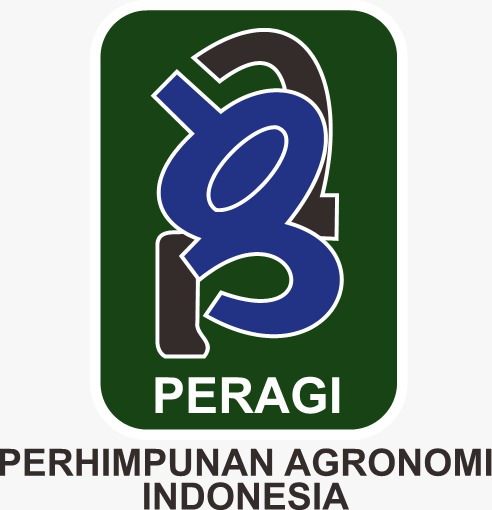The Effectiveness Of Substances In Growth Regulators On Growth Of Root Cutting Of Mother-In Law’s Tongue Leaves (Sansevieria trifasciata)
Abstract
Air pollution is often a major problem in industrial cities because it causes various respiratory diseases. Mother-in law’s tongue (Sansevieria trifasciata) is an ornamental plant that has many benefits. One of them is to help reducing the concentration of carbon monoxide gas in the air. In addition, this plant is easily propagated by cutting. The purpose of this study was to determine the effectiveness of natural and synthetic growth regulators (ZPT) with various doses on root growth of three materials from plant cuttings. This study used a completely randomized design (CRD) with three factors and three replications. The first factor was the type of ZPT, among others, shallot filtrate and Rootone-F. The second factor is the forth ZPT concentration. They are 25%, 50%, 75% and 100%. The third factor is the origin of the plant cuttings. If the collected data has a significant effect it would be further tested by using DMRT (Duncan Multiple Range Test) at a level of 5%. The results showed that the difference in ZPT had a significant effect on root length, but did not affect significantly the number of roots, fresh weight and dry weight. The treatment interaction had a very significant effect on the root length of Sansivera. The interaction with the highest value was found in the interaction of treatment with PGR type Rootone-F with a concentration of 100% with the cuttings originating from the middle of the plant, while the lowest was in the interaction between PGR type and onion filtrate with a concentration of 25% with the cuttings originating from the tip of the plant.
Downloads
References
Adita B.R.C, Ratni N.J. dan Naniek A.R. (2011). Kemampuan Penyerapan Tanaman Hias dalam Menurunkan Polutan Karbon Monoksida.Jurnal Ilmiah Teknik Lingkungan. 4(1), 54–60.
Aida Risqana Khasanah. (2015). Aplikasi Urin Ternak sebagai Sumber Nutrisi pada Budidaya Selada (Lactuca sativa L.) Dengan Sistem Hidroponik Sumbu. Yogyakarta: ProgramStudi Agroteknologi Fak. Pertanian. Universitas Muhammadiyah.
Benjamin, L. (2000). Dasar Fisiologi Tumbuhan. PT. Raja Grafindo Persada Jakarta.
Blakeslee J.J, Peer W.A, Murphy A.S. (2005). Auxin transport.Curr.Opin. Plant Bio.8,494–500.
Choudhary. D. R and Kumar S. (2016). Plant growth regulators in onion-A review.Indian Journal of Arid Horticulture.11 (1-2), 15–21.
Davies, P. J. (2010). Plant Hormone, Biosynthesis, Signal Transduction, Action :Revised 3rdEdition (p. 830). New York: Springer Science Business Media.
Ghasemi Y. Nematzadeh G.A, Omran V.G, Dehestani A, Hosseini S. (2012). The effects of explant type and phytohormones on African violet (Saintpaulia ionantha) micropropagation efficiency. Biharean Biologist. 6 (2),73-76. Article No:121109http://biozoojournals.3x.ro/bihbiol/index.html.
Haberer G and Kieber J.J. (2002).Cytokinins.New insights into a classic phytohormone. Plant Physiol. 128, 354–362.
Hardjanti, S. (2005).Pertumbuhan setek Adenium melalui penganginan, asal bahan setek, penggunaan pupuk daun, dan komposisi media.Jurnal Agrosains. 7(2),108-114.
Krisdianto A, Saptiningsih E, Nurchayati Y dan Setiari N. (2020). Pertumbuhan Plantlet Anggrek Phalaenopsis amabilis (L.)Blume Pada Tahap Subkultur Dengan Perlakuan Jenis Media Dan Konsentrasi Pepton Berbeda.Metamorfosa:Journal of Biological Sciences. 7(2), 182– 190.
Leopold, A.C. & Kriedemann, P.E. (1975).Plant growth and development. (2). New York: Mc Graw Hill.
Marfirani, M, Rahayu Y S dan Ratnasari E. (2014).Pengaruh Pemberian Berbagai Konsentrasi Filtrat Umbi Bawang Merah dan Rootone-F terhadap Pertumbuhan Stek Melati “Rato Ebu”.Lentera Bio 3 (1), 73–76.
Moore, T.C. (1979). Biochemistry and physiology of plant hormones. New York: Spinger-Verlag, Berlin, Heidelberg.
Ramadiana, S. (2008).Respon pertumbuhan setek lidah mertua (Sansevieria trifasciatavar.Lorentii) pada pemberian berbagai konsentrasi IBA dan asal bahan tanam.Prosiding Seminar Hasil Penelitian dan Pengabdian kepada Masyarakat. Bandar Lampung: Universitas Bandar Lampung (UNILA).
Rismunandar.(1988). Hormon Tanaman dan Ternak.PT Penebar Swadaya. Jakarta.
Rusmin.D. (2011).Pengaruh Pemberian GA3 Pada Berbagai Konsentrasi dan Lama Inbibisi Terhadap Peningkatan Viabilitas Benis Puwoceng (Pimpinella pruatjan Molk.).Jurnal Littri. 17 (3).
Salisbury, F.B. dan Ross, C.V. (1995).Fisiologi Tumbuhan Jilid 3. Bandung: ITB Press.
Setiawan., dan A. Wahyudi. (2014). Pengaruh Giberelin Terhadap Pertumbuhan Beberapa Varietas Lada untuk Penyediaan Benih Secara Cepat. Bul. Littro. 25 (2), 111–118.
Sulistiana S. (2013). Respon pertumbuhan stek daun lidah mertua (Sansevieria parva) pada pemberian zat pengatur tumbuh sintetik (Rootone-F) dan asal bahan stek.Jurnal Matematika, Sains dan Teknologi. 14(2), 107–118.
Taiz, L., and E. Zeiger. (2002). Plant Physiology 3rd. Sunderland: Sinauer Associates Inc Publisher Massachusetts.
Copyright (c) 2022 Ahmad Zainul Arifin, Fajar Hidayanto, Ridwan Isnaeni Mahfud

This work is licensed under a Creative Commons Attribution 4.0 International License.
Authors who publish with Jurnal Agronomi Tanaman Tropika (JUATIKA) agree to the following terms:
Authors retain copyright and grant the Jurnal Agronomi Tanaman Tropika (JUATIKA) right of first publication with the work simultaneously licensed under a Creative Commons Attribution License (CC BY 4.0) that allows others to share (copy and redistribute the material in any medium or format) and adapt (remix, transform, and build upon the material for any purpose, even commercially) with an acknowledgment of the work's authorship and initial publication in Jurnal Agronomi Tanaman Tropika (JUATIKA).
Authors are able to enter into separate, additional contractual arrangements for the non-exclusive distribution of the journal's published version of the work (e.g., post it to an institutional repository or publish it in a book), with an acknowledgment of its initial publication in Jurnal Agronomi Tanaman Tropika (JUATIKA). Authors are permitted and encouraged to post their work online (e.g., in institutional repositories or on their website) prior to and during the submission process, as it can lead to productive exchanges, as well as earlier and greater citation of published work.







 More Information
More Information



